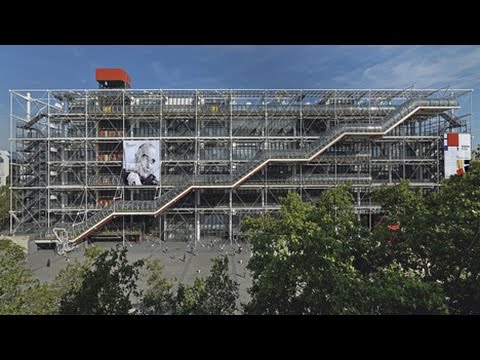
In our second exclusive video interview with Richard Rogers, the British architect reveals that key elements of the Centre Pompidou in Paris, which he designed together with Italian architect Renzo Piano, were strongly influenced by the radical thinking of the 1960s.
The Centre Pompidou was born out of a competition launched by the French government in 1970 and was completed in 1977. However, Rogers cites the political unrest in Paris in the previous decade, when protesting students and workers came close to overthrowing the government in 1968, as a key influence.
“That moment nearly changed history, certainly for Europe,” Rogers says. “It looked as though there would be a revolution. In fact, it didn’t happen. But we captured some of it in the building.”
He adds: “It was a highly active period of politics, and you could argue that it was a part of the concept [for the building]. This was a dynamic period, a period of change, but we wanted to catch what was going on at the moment.”
The Centre Pompidou is also linked to 1968 by its name. Originally called the Centre Beaubourg, the building was renamed when Georges Pompidou, who was prime minister of France when the protests kicked off and became president after Charles de Gaulle was forced to resign, died during construction of the building.
“It is said in France that Pompidou had a plane revving up because he thought he would lose the war against the students, the intellectuals, and the workers,” Rogers says.
In Roger’s and Piano’s original design, the main facade of the building featured a large screen, which would have displayed information from other arts and cultural institutions around the world. But this was scrapped after Pompidou’s death for political reasons.
“The facade on the building, if you look more carefully, was very much about the riots and very much about Vietnam,” Rogers says. “We had it all going very well until Pompidou died and Giscard [the subsequent president of France] came in and sunk it with no hands. He said: ‘It is a political weapon, I don’t want it.’ So that died.”
See the full article on Dezeen: http://www.dezeen.com/2013/07/26/richard-rogers-centre-pompidou-revolution-1968/
Subscribe to our YouTube channel for the latest architecture and design movies: http://bit.ly/1tcULvh